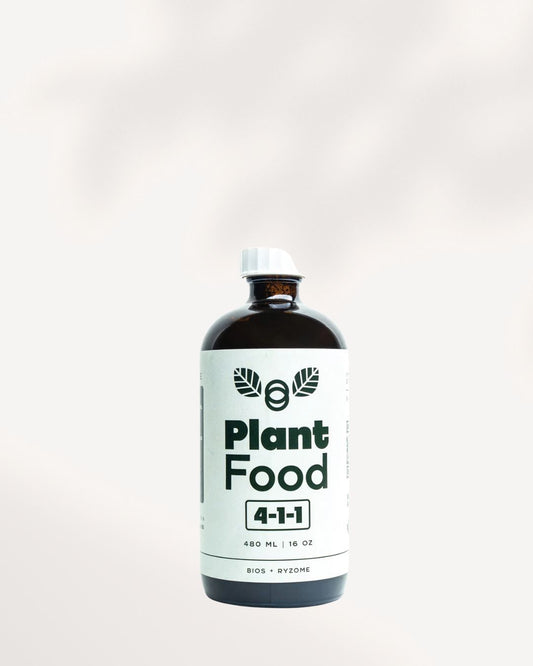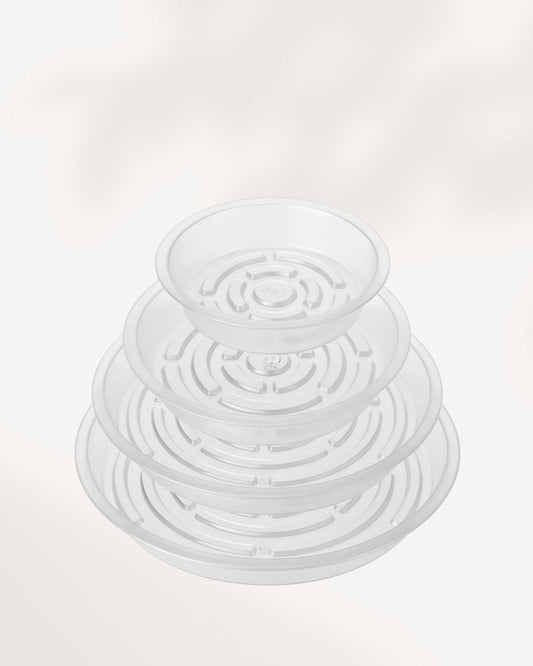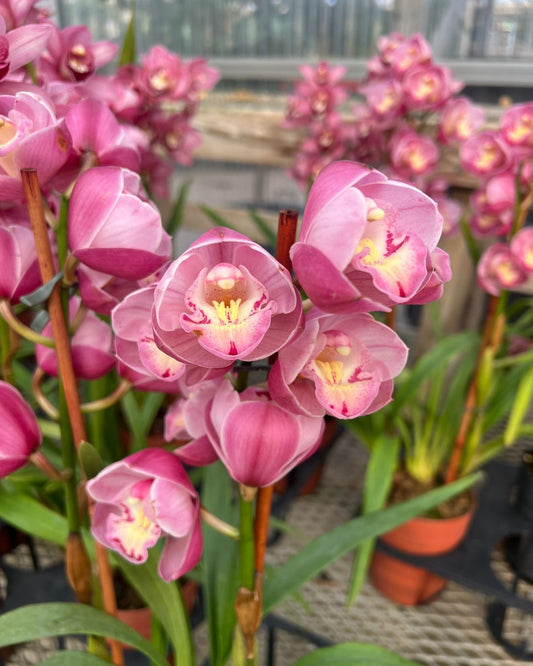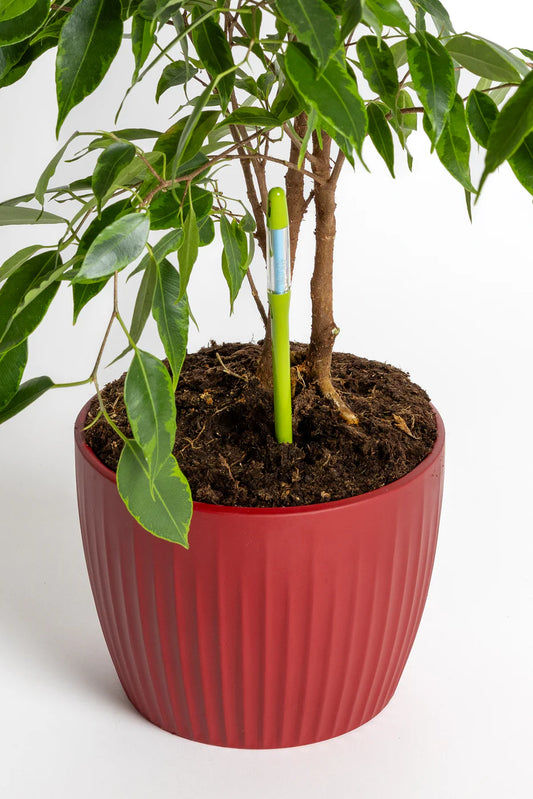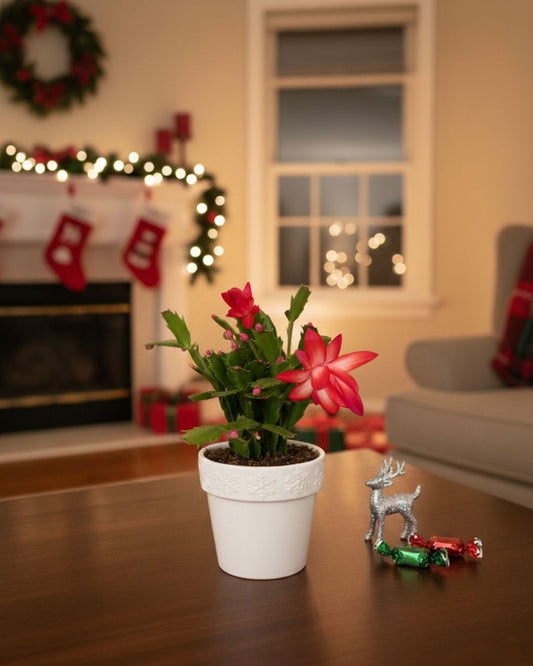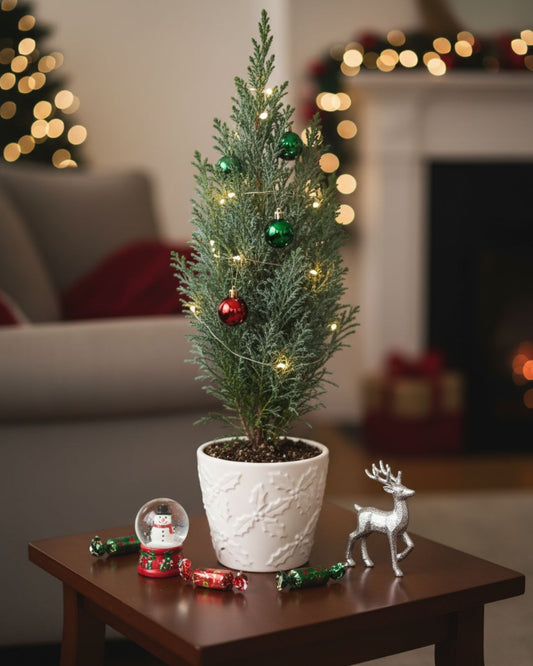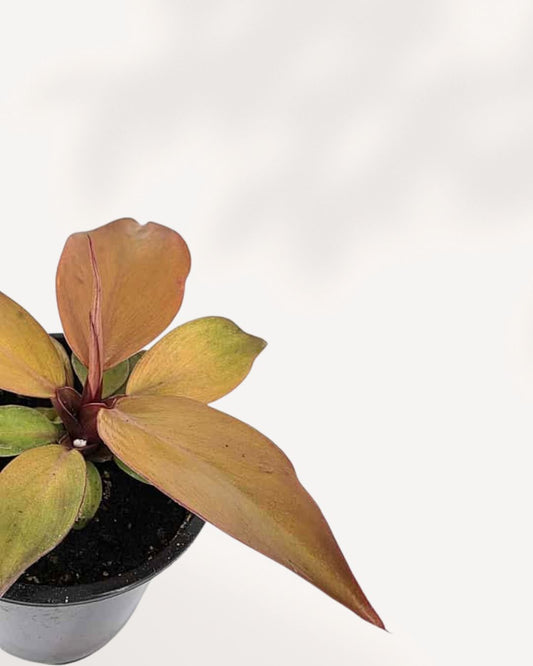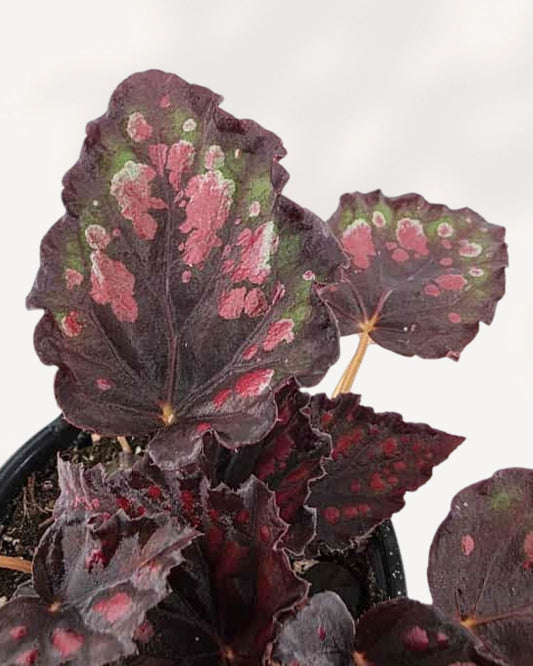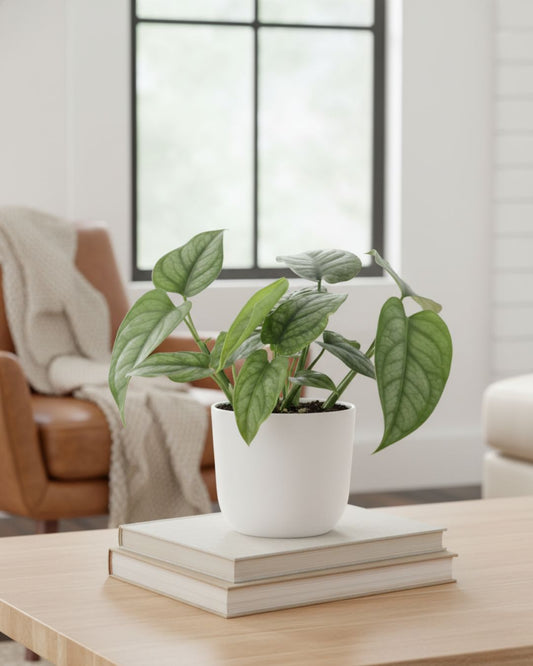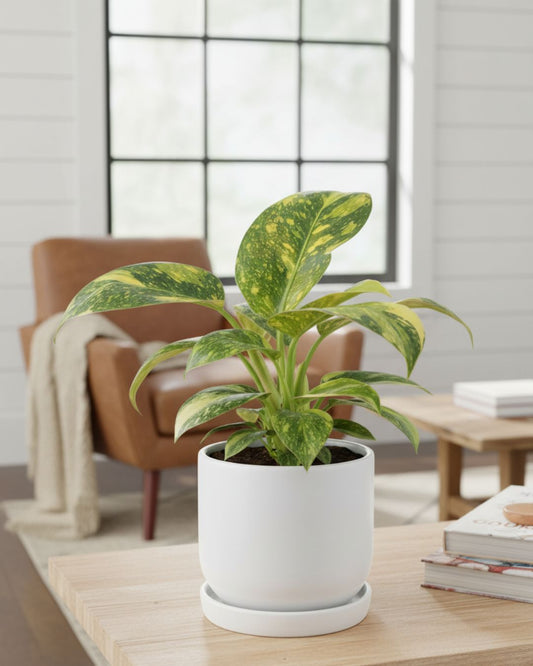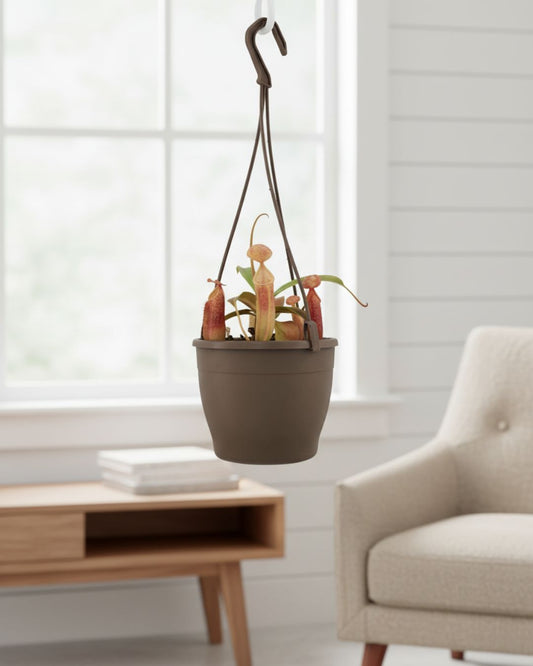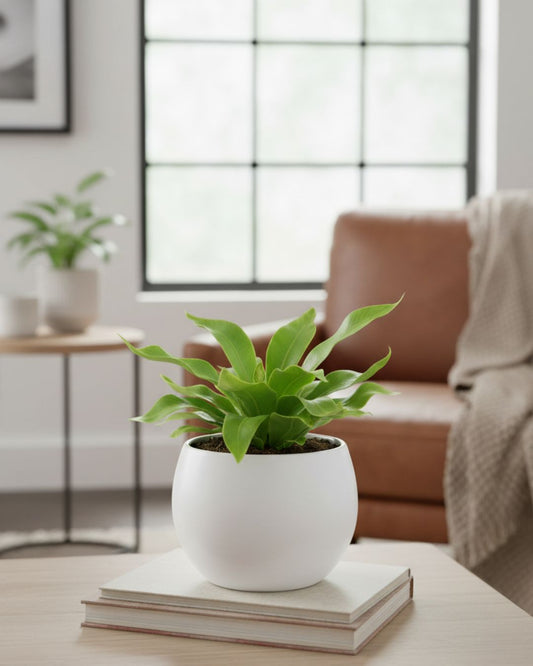How to care for Boston Fern
| Back to Library |
Quick Care Overview
| Care Aspect | Details |
|---|---|
| Light | Bright, indirect light; tolerates low light but thrives in humidity. Learn More |
| Water | Keep soil consistently moist but not soggy. Mist regularly. |
| Soil | Rich, well-draining potting mix. Shop Potting Mix |
| Temperature | 60–75°F (15–24°C); avoid cold drafts. |
| Toxicity | Non-toxic and safe for pets. |
Boston Fern Plant Care Guide | Growing, Watering, and Propagation Tips
Discover how to care for your Boston Fern with expert tips on watering, light, soil, and propagation. Perfect for creating lush, green indoor spaces!
Common Names
- Sword Fern
- Boston Sword Fern
- Nephrolepis exaltata
Native Habitat
Boston Ferns are native to tropical and subtropical regions, flourishing in humid forests and swamps where they receive filtered sunlight.

Uses and Popularity
Boston Ferns are popular for their lush, feathery fronds and air-purifying qualities. They are commonly used to add greenery to homes, offices, and patios.
Boston Fern Plant Care Guide
Light Requirements
Boston Ferns prefer bright, indirect light. Avoid placing them in direct sunlight, which can scorch their delicate fronds. Learn more about light requirements.
Watering Needs
Keep the soil evenly moist but not soggy. Mist regularly to maintain humidity, especially in drier indoor environments.
Soil Preferences
Use a rich, well-draining potting mix to provide essential nutrients. A mix of peat moss, perlite, and pine bark works well. Shop Indoor Potting Mix
Temperature & Humidity
Ideal temperatures are between 60–75°F (15–24°C). Boston Ferns thrive in high humidity, so mist frequently or use a humidifier.
Fertilization
Feed monthly during the growing season with a balanced, water-soluble fertilizer. Explore Natural Fertilizers
Pruning & Maintenance
Remove yellow or dead fronds to encourage new growth. Regular misting helps maintain lush, green foliage.
Propagation Tips
Division
Divide mature Boston Ferns during repotting by gently separating clumps and planting them in fresh soil.
Runners (Stolons)
Boston Ferns can also be propagated by cutting and planting runners that grow along the soil surface.
FAQs
How often should I water my Boston Fern?
Keep the soil moist, watering when the top inch feels dry. Mist regularly for humidity.
Why are my Boston Fern's leaves turning brown?
Brown leaves may result from low humidity or underwatering. Increase misting and check soil moisture.
Can Boston Ferns grow in low light?
They prefer bright, indirect light but can tolerate low light with reduced growth.
The Positive Impact of Plants
-
Plants and Healing
Working with plants soothes the mind. It feels calming and healing, offering a peaceful break from daily life.
-
Plants for Recovery
Being around plants can speed up healing from sickness, making you feel better quicker in a natural way.
-
Plants and Work
Plants in your space may make your work better and faster, enhancing focus and creativity during tasks.
LETTING CUSTOMERS SPEAK FOR US!
Shop by Feature
FAQs for Plant Delivery in Ontario & Quebec
What types of house plants do you offer for delivery.
We offer a wide variety of houseplants for delivery. Here are some of the popular options: Aglaonema, Alocasia, Calathea, Hoya, Monstera, Palm, Peperomia, Philodendron, Pothos, Sansevieria Snake, Syngonium, Tradescantia.
What is the lifetime support?
All plants purchased from our store or through our workshops come with lifetime support. This means that whenever you have questions or concerns about your plant, we're here to help. Whether you're unsure about your plant's health or need advice, we can assist in identifying problems, answering your questions, and potentially saving your plant. Feel free to reach out to us on Instagram @mygreenscapeto or via email at support@mygreenscape.ca.
Where do Mygreenscape plants come from?
Our plants embark on a journey from various greenhouses across Canada. We prioritize short delivery routes to ensure your plant arrives happy, healthy, and full of vitality.
Do I have to repot my plants once they arrive?
Absolutely not! When your plant arrives, give it time to settle into its new home. Place it in the desired spot, and let it acclimate for about two weeks.
Favorite in our plant shop
-
Liquid Plant Fertilizer
Regular price From $30Regular priceUnit price per -
Plant Saucer
Regular price From $2Regular priceUnit price per -
Cymbidium Orchid
Regular price $89Regular priceUnit price per -
SUStee Soil Moisture Indicators
Regular price From $12Regular priceUnit price per -
Christmas Cactus
Regular price $12Regular priceUnit price per -
Ellwoodii Cypress
Regular price $18Regular priceUnit price per -
Philodendron 'McColley's Finale'
Regular price $15Regular priceUnit price per -
Begonia Rex 'Harmony Stained Glass'
Regular price $15Regular priceUnit price per -
Monstera Siltepecana
Regular price $15Regular priceUnit price per -
Philodendron Green Congo Nuclear
Regular price $45Regular priceUnit price per -
Nepenthes Sanguinea Pitcher Plant
Regular price $35Regular priceUnit price per -
Cobra Fern
Regular price $18Regular priceUnit price per
MyGreenScape is your go-to online shop for indoor plants in cities Ontario or Quebec, including Toronto, Montreal, and many more. Our mission is to add joy to your home, one leaf at a time. Explore our range of beautiful, air-cleaning plants from the comfort of your home. You can find beautiful indoor plants, pots for plants, garden tools, and hanging basket plants all in one spot. Our mission is to add joy to your home, one leaf at a time.
Buying plants online with us means no more carrying heavy pots or figuring out how to get big plants home. We deliver straight from the gardener to you, with eco-friendly packaging, across Ontario and Quebec. Expect your new green friends within 2-7 days.
Why choose MyGreenScape? Here’s why:
- Lifetime Support: We’re here for you always. Get all the help you need for your plants to flourish.
- 30-Day Happy Plant Guarantee: Not happy with your plant? Tell us within 30 days, and we’ll fix it.
- Easy Delivery: Fast, direct to your doorstep in Ontario or Quebec.
Hear from a happy customer, Sarah T.: "Buying plants was never easier. Quick, simple, and with great support from MyGreenscape."
Ready for easy, stress-free plant shopping? Visit us now and make your home greener. Join MyGreenScape for a hassle-free way to bring nature inside.



















